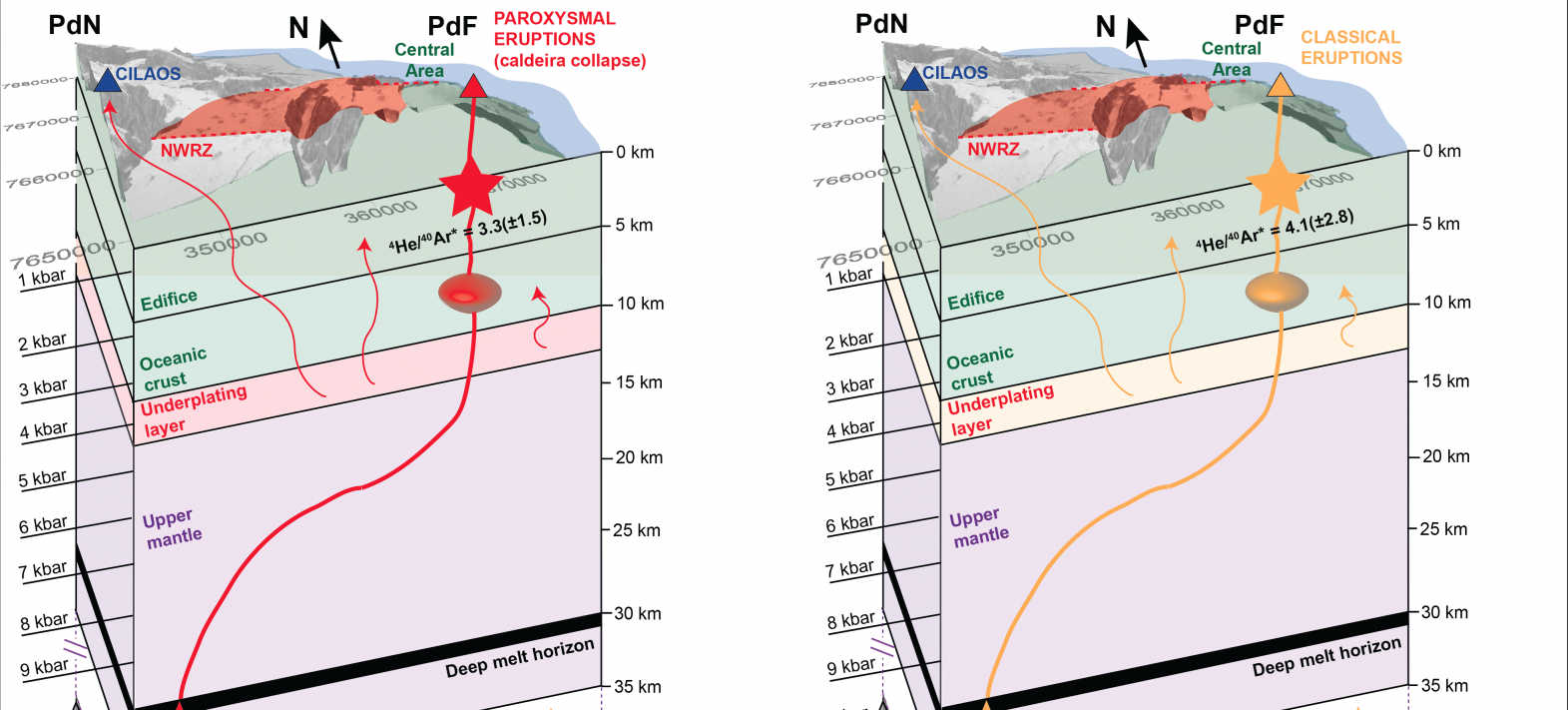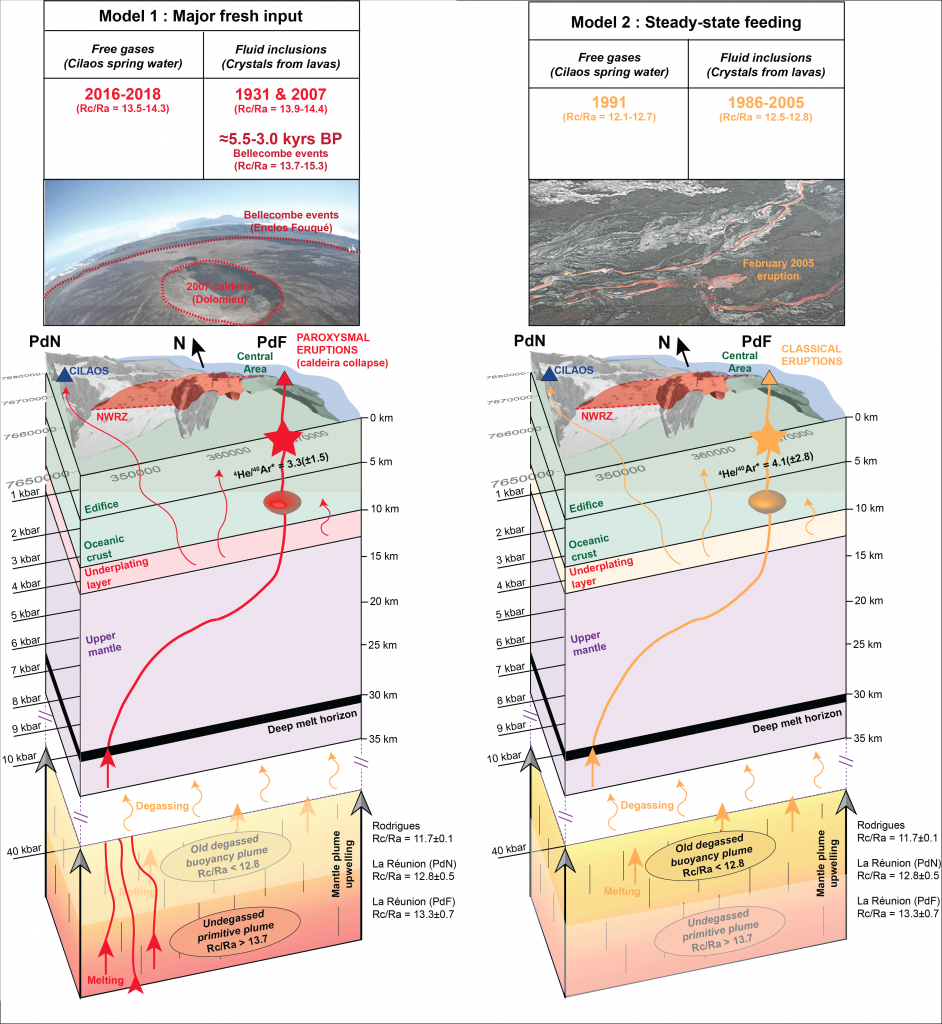Paroxysmal volcanic eruptions predicted by temporal variations in helium isotopes
Primordial helium-3 (3He) enrichment is regularly detected in volcanic fluids, but its temporal variability and link with volcanic activity are still poorly constrained.

Publication date: 03/07/2020
Press, Research
Related observatories : Volcanological Observatory of Piton de la Fournaise (OVPF-IPGP)
Related teams :
Volcanic Systems
Related themes : Natural Hazards








